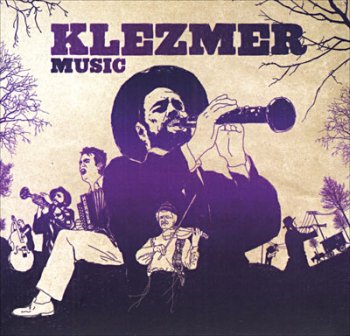
Corners of the World is going to be an occasional feature here, focusing on world music. This is really the second post in the series, the first being my post on Scottish folk music.
Let me wish a happy Passover to all. As you know, the story of Passover is the story of how the Jewish people escaped their bondage to the pharoah in Egypt. But the story does not end there. The Jewish people wandered in the desert for forty years, before they found their home. This wandering may serve as a metaphor for the story of Klezmer music.
In the old country, klezmer was the music of the eastern European, or Ashkenazi, Jews. Their language was Yiddish. Klezmer was played at celebrations, such as weddings, funerals, and bar mitzvahs. It was played traveling musicians, who were influenced by the cultures of the countries they lived in. Jewish settlements, or shtetls, were small, and one shtetl could not provide enough work for one klezmer band.
When the Ashkenazi Jews emigrated to the United States, they brought their culture with them. New York City, by the beginning of the twentieth century, had a large enough Jewish population that there soon developed a Yiddish theater, and daily newspaper in Yiddish, and many occasions that required the services of Klezmer musicians.
In 1921, David Tarras emigrated to New York City. Tarras was born in the Ukraine, where he first played Klezmer in his father’s band. Tarras, a clarinet player, was unusual among the Klezmer musicians in New York, because he could read and write music. This made it easier for Tarras to find work as a musician and, especially as a recording artist.
The Jews adapted to life as Americans and became assimilated. The quality of their lives improved, but the traditions faded. Each successive generation knew less Yiddish than the prior one. The Yiddish theater closed; the newspaper ceased publication. And there were fewer and fewer places for Klezmer musicians to play, so fewer and fewer took up the music. By the 1950s, Tarras was a nostalgia act, remembered only by old people. Klezmer began its time in the desert.
By the late 1970s, Klezmer was all but forgotten. But there was a movement among Jews to rediscover their heritage. And some of these were musicians. One, Frank London, was a jazz musician who was amazed to discover that there was “interesting” Jewish music. In college, he came across old recordings by David Tarras and his contemporaries, and he was fascinated. London became a founding member of the Klezmer Conservatory Orchestra, and the Klezmer revival was born.
The Klezmatics: Tiseveles Bulgar
[purchase]
In 1986, London struck again. He found a group of Jewish musicians with varied musical backgrounds, and together they became the Klezmatics. The Klezmatics pay tribute to the original sources of the music; Tiseveles Bulgar was written by David Tarras. But they also allow Klezmer to grow, blending influences from other kinds of music. Remember, this is exactly what the Klezmer musicians did in the old country.
Frank London‘s Klezmer Brass Allstars: Our Ancestors Forty Thousand Years Wide
[purchase]
Frank London continues to stretch the boundaries of Klezmer even now, both with the Klezmatics and on his own. Here, London explores the possibilities of a Klezmer brass band.
Itzhak Perlman w/ The Andy Statman Klezmer Orchestra: Khaiterma
[purchase]
Andy Statman began his musical career as a folk mandolin player. Since he began to explore his Jewish musical roots, Statman has also become a fine clarinet player. When Itzhak Perlman, the renowned classical violinist began his own exploration years later, Statman was one of the musicians he sought out to help him.
The Burning Bush: Fun Tashlach
[purchase]
The Klezmer revival was born in the United States, but nowadays the music can be found in many countries, and is played by both Jewish and non-Jewish musicians. The Burning Bush are a British group that plays both Klezmer and the music of the Sephardic Jews, those who settled in Spain, parts of northern Africa, and eventually the Middle East. Fun Tashlach is a traditional klezmer tune.
Di Naye Kapelye: Baj Van Medley
[purchase. This album is not available on Amazon‘s US site. I have provided a link to a German vendor. Pricing is in Euros.]
Today, Klezmer music has come full circle. As it turns out, there are still old gypsy and Jewish musicians in eastern Europe who remember Klezmer music from their youth, and have kept the traditions barely alive. The members of Di Naya Kapelye, (Yiddish for “The New Band”), have sought these people out, and learned the music from them. So now, the joyous sound of Klezmer can once again be heard in the lands where it was born.






1 comments:
Thank you for your kind words.
Post a Comment